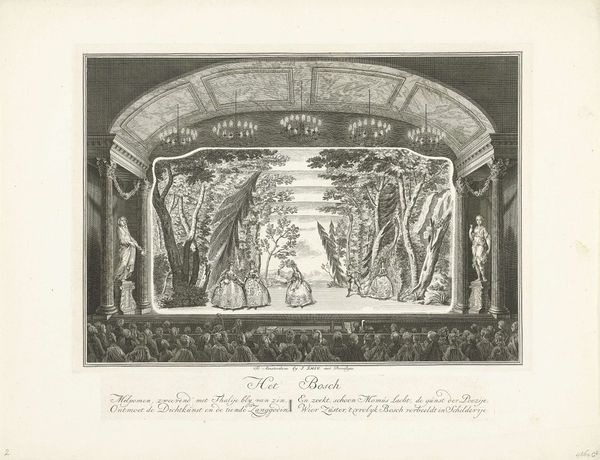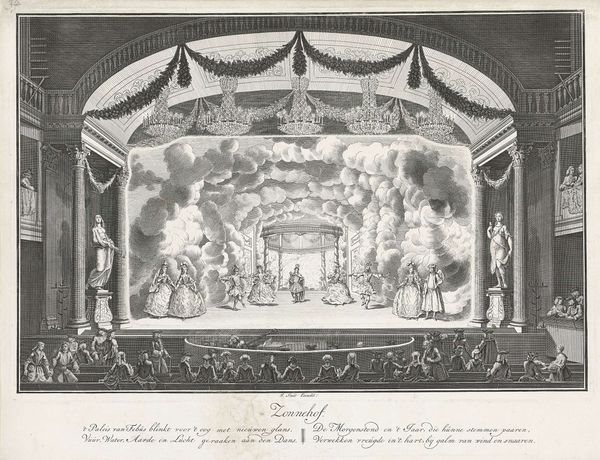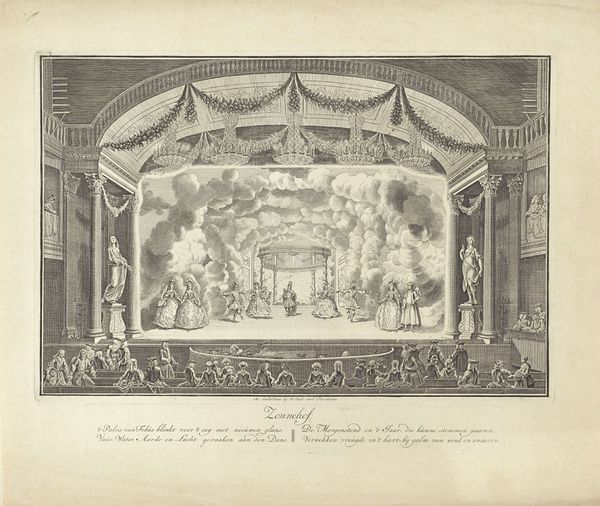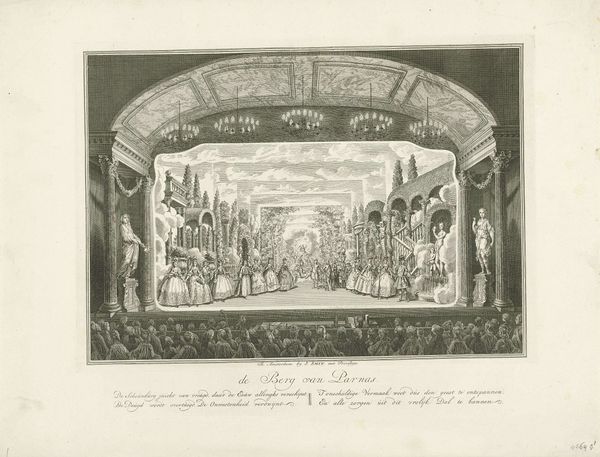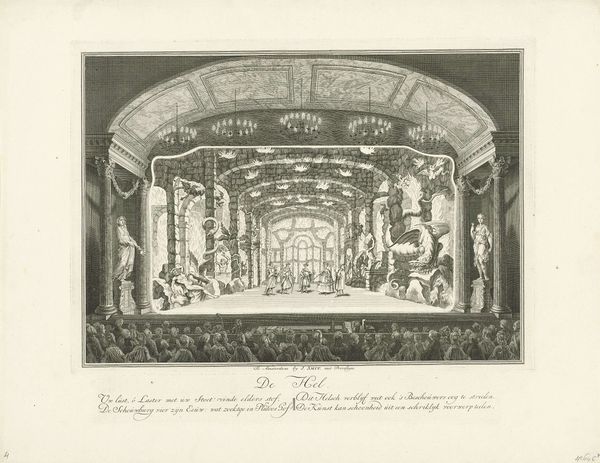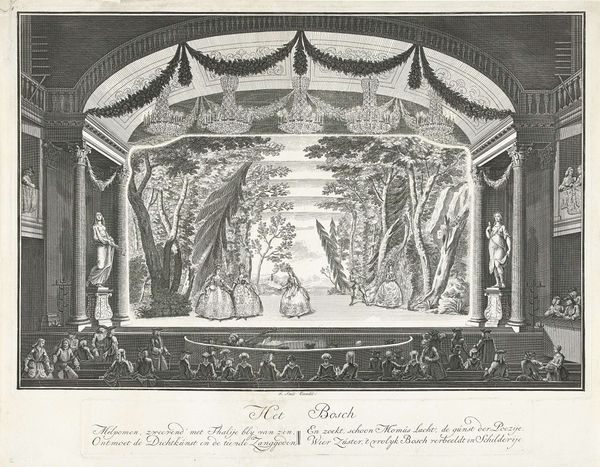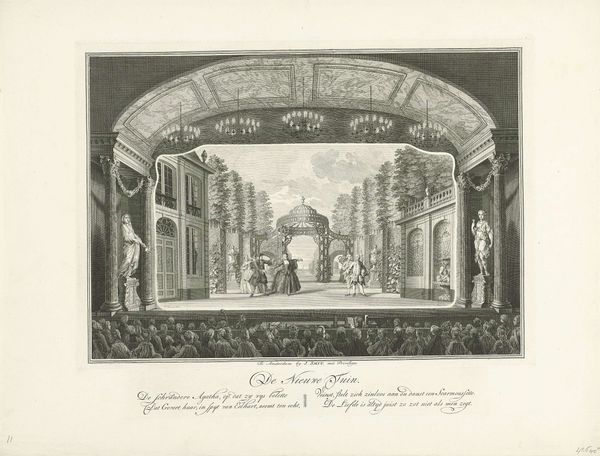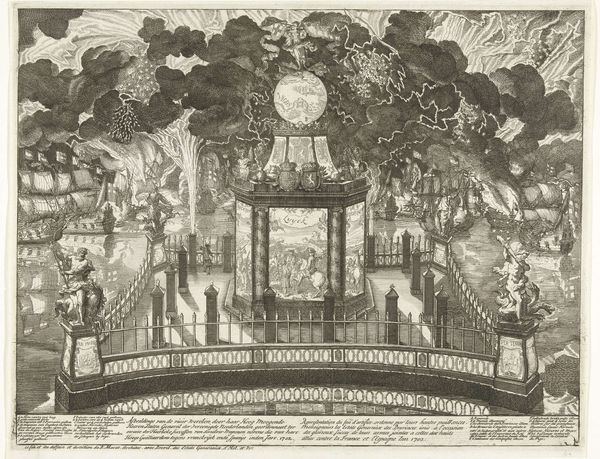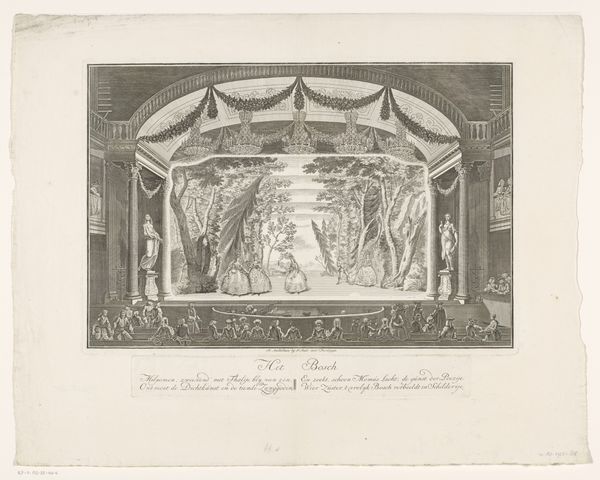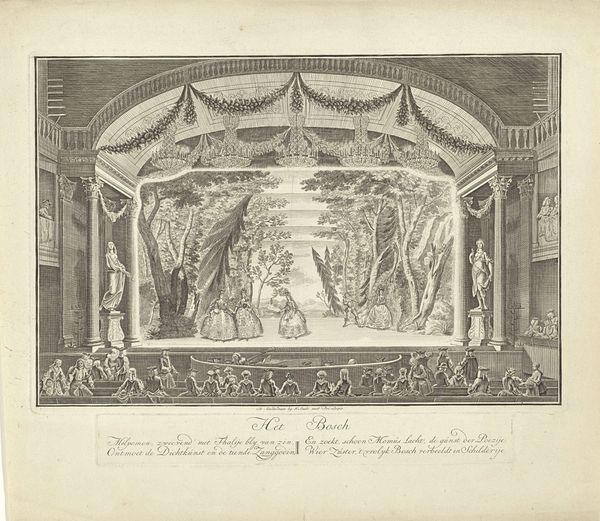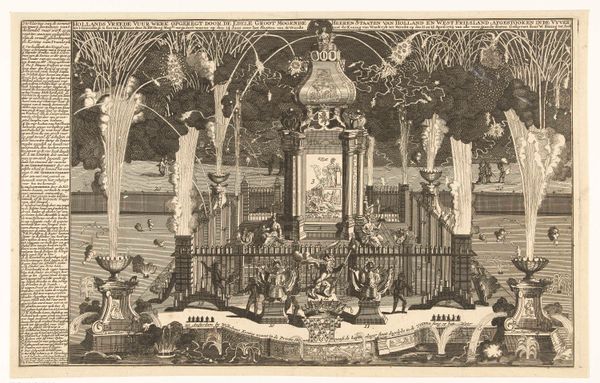
print, engraving
#
aged paper
#
baroque
# print
#
old engraving style
#
form
#
personal sketchbook
#
cityscape
#
genre-painting
#
engraving
Dimensions: height 421 mm, width 542 mm
Copyright: Rijks Museum: Open Domain
Curator: This engraving by Jan Punt, dating from roughly 1738 to 1772, is titled "Schouwburg met toneeldecor: Zonnehof", held here at the Rijksmuseum. It depicts a theatrical performance in a grand baroque style. Editor: It's remarkable how Punt captured the ephemeral nature of theatre in this monochrome print. The play of light and shadow gives the scene an almost dreamlike quality. The costumes and gestures feel very stylized. Curator: Indeed, the structural elements guide our gaze. Note how the composition uses the architectural framework of the theatre itself to create a series of frames within frames. The proscenium arch, the sculpted figures on either side – each layer contributes to a carefully constructed viewing experience. Editor: And it’s all reproduced with a wonderful degree of detail! You can almost feel the textures of the stage costumes and the opulence of the theater interior – think about the skills, labor and the type of materials that an artist uses to depict such refined scenes. Curator: Precisely. It is very clearly playing with contrasting perspectives – foreground and background blend somewhat, drawing the eye not only to the immediate performance but the backdrop as well. Note the somewhat overwhelming sky with smoke – or perhaps it represents fire? The symbolic use of form is critical, really. Editor: And how do we understand the audience and performers’ relation to production and labour? Those dresses must have been unbelievably complex, stitched by hand using candlelight over weeks! Or, maybe even more relevantly, the engraver, Jan Punt, who produced this entire print based on sight or another drawing… it really connects us to a network of creators. Curator: Certainly the context informs our reading of the print, but consider solely its formal arrangement, its intricate detail achieved purely through line and form. This is the artist conveying the spectacle and emotion. Editor: Still, the tactile quality inherent in the printing process offers insight into broader workshops—craftspeople collaborate, generating wealth through image circulation; this goes beyond simple aesthetics. Curator: An intriguing balance, ultimately – where materiality and form intertwine, shaping not only an artwork but how the very meaning takes shape. Editor: I think this balance keeps those images so alive, don't you? Giving each of us the material needed to make meaning.
Comments
No comments
Be the first to comment and join the conversation on the ultimate creative platform.
